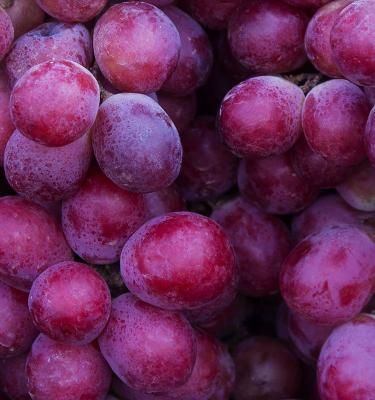

How to grow & care for grapes
Growing grapes from your own grapevine really are the perfect summer snack! Fruiting grapevines are fast-growing, productive and long-lived. Grapevines can be grown along a fence, over a pergola or trained to grow up a sturdy, free-standing support structure.
Depending on what you’d like to do with your grape crop, there are 3 main types of grape varieties to choose from; table grapes, wine grapes and dried fruit grapes.
Table grapes are often (but not always) seedless and produce plump, sweet fruit in summer. Wine grape varieties are selected for their different flavour profiles and although sometimes they taste nice eaten fresh, their best grown to produce wine. Dried fruit grape varieties make delicious sultanas or muscats - perfect for the long-term use of your crop.
Top 5 steps to growing grapes
- Choose a full sun spot with free draining soil or grow in a large pot
- Grapevines use tendrils to climb, so provide a strong support structure for them
- Improve the soil before planting with Scotts Performance Naturals™ Organic Based Soil Improver and Scotts Performance Naturals™ All Purpose Organic Based Fertiliser
- Grapes are drought tolerant once established but will benefit from regular water when fruiting during the hot summer months.
- Grapes prefer a hot and dry climate, but there are varieties suited to the subtropics.
- Grapevines need an annual hard prune in winter
Shopping List
- A potted grapevine
- Scotts Performance Naturals™ Organic Based Soil Improver
- Scotts Performance Naturals™ All Purpose Organic Based Fertiliser
- Garden trowel
- Large pot or planter plus Scotts Performance Naturals™ Premium Organic Based Potting Mix if growing in a pot
- Defender Pyrethrum Insect Spray
Prepare
Choose a full sun spot and have the support structure installed before you plant to avoid disturbing roots later on.
Dig the hole for your grapevine twice as wide as the original nursery pot and the same depth.
Loosen the original soil at the bottom of the planting hole and mix Scotts Performance Naturals™ Organic Based Soil Improver and Scotts Performance Naturals™ All Purpose Organic Based Fertiliser through the backfill soil and the soil at the base of the hole.
Planting in the garden
Plant grapevines into prepared soil, at the base of your support structure. If growing more than one grapevine, plant them 1.0-1.5 metres apart in rows 1.5m apart. Always check the specific variety instructions for your grapevine before planting.
Lightly mulch the soil around plants after planting with an open organic mulch to retain moisture. Keep the mulch away from the main growing stem or any graft points. Water young grapevines twice weekly to help them establish, once they’ve settled into their new home they are relatively drought tolerant. Feed in spring with Scotts Performance Naturals™ All Purpose Organic Based Fertiliser at the recommended rate.
Planting in pots
Grapevines can be grown in large pots around 60cm by 60cm, just make sure the pot has plenty of drainage holes. Position your pot next to the support structure for the growing vine and fill the pot with Scotts Performance Naturals™ Premium Organic Based Potting Mix.
In the centre of the pot plant 1 grapevine and water it in well. As the plant grows, train the growth up the support structure or trellis. Young grapevines will need regular watering as they grow, but once they are established they are relatively drought tolerant. Feed in spring with Scotts Performance Naturals™ All Purpose Organic Based Fertiliser at the recommended rate.
Harvest
Harvest grapes by the bunch - snipping off each bunch with sharp scissors or secateurs. Use your taste buds to tell when the fruit is ripe and ready to harvest. Fruit should be sweet and juicy at harvest time, leave the fruit on the vine longer to develop flavour if needed.
Grapevines will often not fruit for the first 2 years in your garden - this is fine and if any fruit does appear in these early years it can be best to remove it so the plant can put its energy into growing a strong and healthy root system.
Protect your grape harvest from hungry birds and wildlife by using wildlife safe netting over the whole vine or individual net bags tied around each bunch of grapes.
.jpg)
Pests & Diseases
Grapevines are susceptible to fungal diseases that can infect both the leaves and the fruit. Avoid overheat watering to reduce humidity around the plant. If needed remove excess foliage growth in summer to open up the plant and improve airflow.
Protect your grape harvest from hungry birds and wildlife by using wildlife safe netting over the whole vine or individual net bags tied around each bunch of grapes.
Caterpillars can also attack grapevines - pick them off by hand if they aren’t in huge populations but it their numbers get out of control spray with Defender Pyrethrum Insect Spray.



